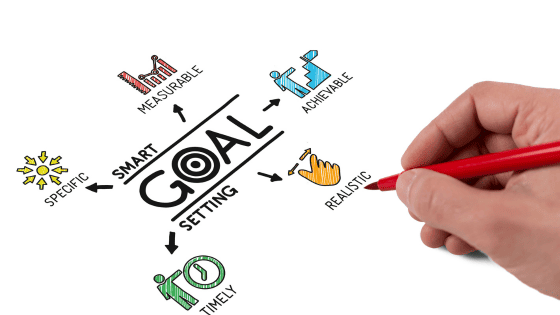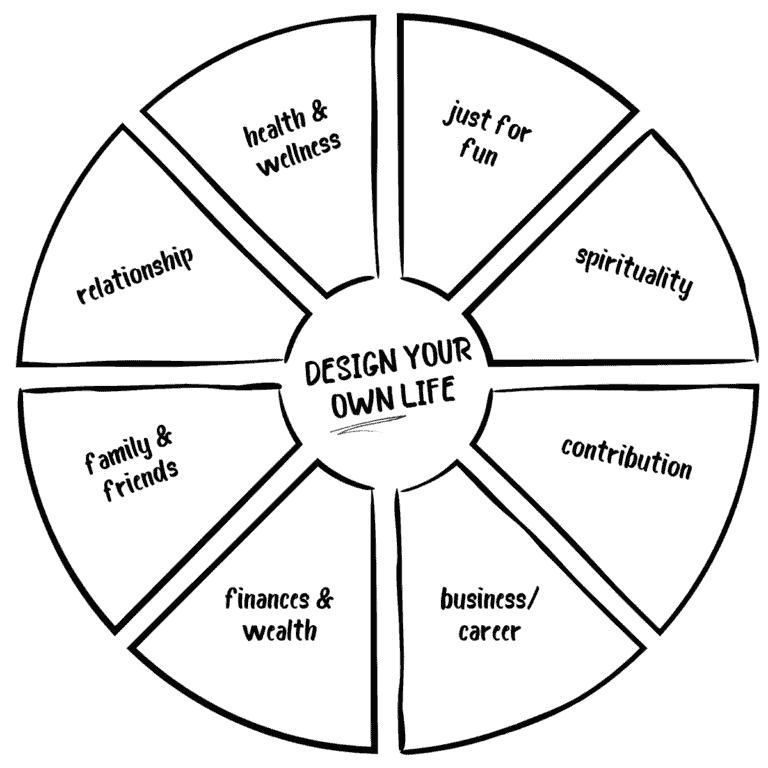SMART Goals For Weight Loss: Examples to Help You Succeed
Setting goals is an essential part of achieving success, especially when it comes to weight loss.
Understanding SMART Goals for Weight Loss
What are SMART Goals?
SMART goals help to break down a larger goal into smaller, more achievable steps, making it easier to track progress and stay motivated.
The acronym SMART stands for:
- Specific: Goals should be clear and specific, with a clear outcome in mind.
- Measurable: Goals should be quantifiable, so that progress can be tracked.
- Achievable: Goals should be realistic and achievable, based on the individual’s abilities and resources.
- Relevant: Goals should be relevant to the individual’s overall weight loss journey.
- Time-bound: Goals should have a specific deadline, to create a sense of urgency and help with motivation.
Related: How To Write SMART Goals
Benefits of SMART Goals for Weight Loss
There are several reasons why using SMART goals for weight loss can be beneficial, such as for:
- Clarity: SMART goals provide a clear and specific direction for your weight loss journey. By defining your goals in a SMART manner, you have a clear roadmap to follow.
- Focus: SMART goals help you prioritize and concentrate your efforts on what truly matters. By breaking down your weight loss goals into smaller, manageable steps, you can stay focused on taking the necessary actions and avoid feeling overwhelmed.
- Progress tracking: With SMART goals, you can easily track your progress. By setting measurable indicators, such as pounds lost or inches reduced, you can monitor your advancements and adjust your strategies accordingly.
- Motivation: SMART goals provide a sense of motivation and accomplishment. As you achieve each milestone or reach specific targets along the way, you can celebrate your successes, which can keep you motivated and committed to your weight loss journey.
- Accountability: By setting SMART goals, you create a sense of accountability. Sharing your goals with others, tracking your progress, or seeking support from a partner or a professional can help you stay accountable and committed to your weight loss efforts.
- Empowerment: SMART goals empower you to take control of your weight loss journey. By setting specific goals and deadlines, you become more proactive in making healthier choices, developing sustainable habits, and feeling empowered to make positive changes.
Overall, using SMART goals for weight loss enhances your chances of success by providing clarity, focus, progress tracking, motivation, accountability, and empowerment throughout your journey.
Examples of SMART Goals For Weight Loss
Setting SMART goals is an effective way to achieve weight loss.
Here are some examples of SMART goals for weight loss that are specific, measurable, achievable, relevant, and time-bound:
Example 1: Walking
A person who is just starting to lose weight can set a SMART goal of walking with a coworker for 15 minutes during lunch three days per week for the next four weeks to break up their sedentary day and increase their activity level. This goal is specific, measurable, achievable, relevant, and time-bound.
Example 2: Logging Daily Food & Drink Intake
Tracking what you eat and drink is essential for weight loss and overall fitness.
A SMART goal for logging daily food and drink intake could be to track every meal and snack for the next week using a food diary app. This goal is specific, measurable, achievable, relevant, and time-bound.
Example 3: Ideal Weight
A person who has a specific weight goal in mind can set a SMART goal to reach their ideal weight.
For example, they could set a goal to weigh 145 pounds by the first of December this year or be a size 10 dress size by the 25th December this year. These goals are specific, measurable, achievable, relevant, and time-bound.
Example 4: Strength Training
Strength training is an effective way to lose weight and build muscle. A SMART goal for strength training could be to perform three sets of 10 reps of squats, lunges, and push-ups twice a week for the next four weeks. This goal is specific, measurable, achievable, relevant, and time-bound.
Example 5: Drinking Water
Drinking enough water is important for weight loss and overall health. A SMART goal for drinking water could be to drink eight glasses of water per day for the next four weeks. This goal is specific, measurable, achievable, relevant, and time-bound.
Overall, setting SMART goals for weight loss is an effective way to achieve your desired results. By following the principles of SMART goals, you can create a clear and achievable plan that will help you reach your weight loss goals.
Creating SMART Goals for Weight Loss
Creating your own SMART goals for weight loss involves following the framework to ensure they are effective and attainable.
Here’s a step-by-step guide to creating your SMART goals:
- Specific (S): Start by making your goals specific and clearly defined. Instead of a vague goal like “I want to lose weight,” specify the exact outcome you desire. For example, “I want to lose 20 pounds.”
- Measurable (M): Ensure that your goals are measurable so that you can track your progress. Define how you will measure your success, such as using a scale, body measurements, or clothing sizes. For instance, “I will track my weight loss progress by weighing myself weekly.”
- Achievable (A): Set goals that are challenging but realistic and attainable. Consider your current lifestyle, health condition, and any constraints you may have. Set goals that are within your reach and can be accomplished with effort and commitment. For example, “I will aim to lose 1-2 pounds per week, which is considered a healthy and achievable rate of weight loss.”
- Relevant (R): Ensure your goals are relevant and aligned with your overall weight loss objectives. Consider why you want to lose weight and how it fits into your broader health and well-being goals. Make sure your goals are meaningful to you and will have a positive impact on your life. For instance, “Losing weight will improve my overall health, increase my energy levels, and enhance my self-confidence.”
- Time-bound (T): Set a specific timeframe or deadline for achieving your weight loss goals. This helps create a sense of urgency and focus. It also allows you to break your goals down into smaller, actionable steps. For example, “I will lose 20 pounds in 12 weeks by following a balanced diet and exercising for at least 30 minutes five times a week.”
Remember, SMART goals are meant to be dynamic and adjustable. Regularly review and reassess your goals, making any necessary modifications based on your progress and changing circumstances.
Also, consider seeking guidance from a healthcare professional or a registered dietitian to ensure your goals are safe and appropriate for your individual needs.
For more content, check out:





